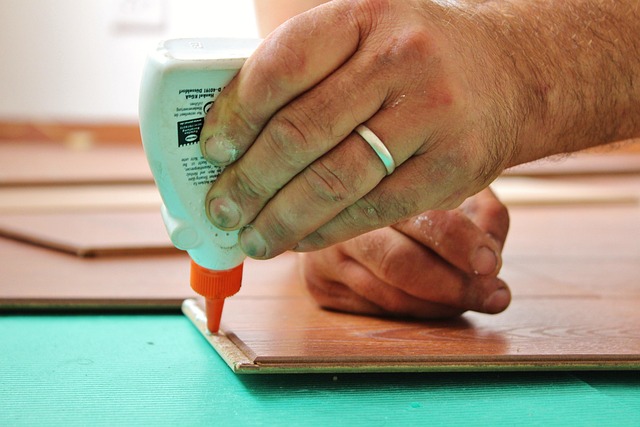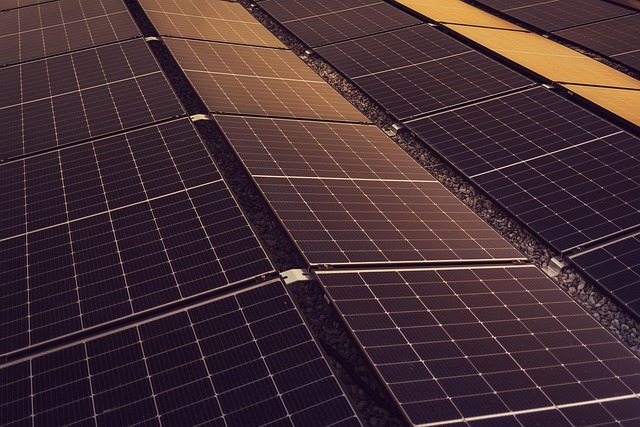Glulam (glue laminated beams) is a sustainable construction material, offering exceptional strength and durability with minimal environmental impact. Made from bonded wood layers, it reduces waste, emissions, and deforestation compared to traditional methods. Its longevity, reusability, and aesthetic appeal make it an eco-conscious choice for builders and architects, contributing to a greener future.
Reducing our carbon footprint is paramount in combating climate change, and the construction industry plays a significant role. Enter glulam—a sustainable building material made from glue laminating multiple wood layers together. This innovative product offers a promising path towards eco-friendly construction. In this article, we explore the sustainability of glue laminated beams (glulam), delving into its benefits, manufacturing process, longevity, and global adoption, providing insights into why glulam is a game-changer in the quest for a greener future.
- Understanding Glulam: A Sustainable Building Material
- Carbon Footprint Comparison: Traditional vs. Glulam Beams
- Benefits of Using Glue Laminated Beams for Eco-Friendly Construction
- Manufacturing Process: Reduced Emissions and Waste
- Longevity and Reusability: Lowering Environmental Impact Over Time
- Global Adoption: Case Studies and Future Trends
Understanding Glulam: A Sustainable Building Material

Glulam, or glue laminated beams, represents a significant step forward in sustainable building practices. This innovative material is crafted through the precise layering and bonding of multiple wood panels with environmentally friendly adhesives. The result is an incredibly strong and durable product that offers a low-environment impact alternative to traditional construction methods. By utilizing glulam, builders and architects can create structures with reduced carbon footprints, as the production process involves less energy consumption and fewer emissions compared to metal or concrete alternatives.
The sustainability of glulam extends beyond its manufacturing. The material’s ability to be crafted from a variety of wood species, including those from reclaimed sources, further reduces the demand for new timber. This not only conserves natural resources but also supports sustainable forest management practices. Moreover, glulam’s longevity ensures that buildings constructed with this material have lower maintenance costs and longer lifespans, contributing to a more environmentally conscious built environment. To learn more about the benefits of glulam and its role in shaping a greener future, visit us at unalam.com.
Carbon Footprint Comparison: Traditional vs. Glulam Beams

In today’s eco-conscious home construction, reducing carbon footprint is paramount. When comparing traditional building methods to glulam (glue laminated beams), the sustainability benefits of glulam stand out. Traditional wooden beams, often sourced from old-growth forests, contribute significantly to deforestation and the associated carbon emissions. In contrast, glulam beams are crafted through a process that involves gluing together smaller pieces of wood, minimizing waste and ensuring stronger structural integrity.
The production of glue laminated beams relies on more sustainable forestry practices and natural glue alternatives, reducing the carbon footprint at every stage. Moreover, these eco-friendly building practices don’t just benefit the environment; they also contribute to a healthier indoor atmosphere due to the absence of chemicals often found in traditional wood processing. For those seeking green building practices for beams, glulam offers an excellent option. Visit us at 18 Clifton St, Unadilla, NY 13849 anytime to learn more about how these innovative materials are shaping the future of construction.
Benefits of Using Glue Laminated Beams for Eco-Friendly Construction

The use of Glue Laminated Beams (glulam) offers a compelling solution for eco-conscious construction practices, making it an increasingly popular choice among builders and architects seeking sustainable alternatives. This innovative structural material is crafted from multiple layers of wood veneers, meticulously bonded together with strong adhesives, resulting in incredibly strong and durable beams. One of the key advantages lies in its environmental benefits; glulam contributes to reducing a project’s carbon footprint due to its source and production methods. Unlike traditional solid timber, which may involve extensive logging, glulam is typically made from fast-growing trees, ensuring a more sustainable supply.
Furthermore, the energy-efficient lamination processes employed in manufacturing glulam minimize the material’s environmental impact. This method reduces waste and lowers carbon emissions compared to other wood product alternatives. As an environmentally friendly wood product, glulam provides builders with a high-performance material that is also kind to the planet. To learn more about the sustainability of glulam and its potential for your projects, visit us at unalam.com.
Manufacturing Process: Reduced Emissions and Waste

The manufacturing process of glue laminated beams, or glulam, showcases a significant step towards reducing carbon footprints in construction. Unlike traditional wood products, glulam is produced with an eye for sustainability. The process begins with selecting high-quality wood from certified sustainable sources, minimizing the environmental impact at its source. This is followed by careful grading and cutting to optimize material use—a crucial aspect in waste reduction.
The core of glulam’s eco-friendliness lies in its production methods. Advanced laminating techniques bind these wood layers together with strong adhesives, creating strong, solid beams while significantly reducing emissions and waste compared to conventional lumber. This not only cuts down on the carbon footprint but also results in longer-lasting glued wood structures. For those seeking eco-friendly architectural choices, glulam offers a compelling solution. Contact us at (607) 369-9341 to learn more about how this innovative method contributes to a greener future in construction.
Longevity and Reusability: Lowering Environmental Impact Over Time

One of the key advantages of glulam, or glue laminated beams, is its exceptional longevity and reusability. This sustainability aspect significantly reduces environmental impact over time compared to traditional construction methods. Glulam structures can last for decades, if not centuries, with minimal maintenance, making them an eco-friendly option for both new builds and renovations. The durability of these glued lumber products means they can be reused in various projects, further extending their lifespan and decreasing the demand for new materials.
By opting for glulam, builders and architects can create structures that are not only aesthetically pleasing but also highly functional and environmentally conscious. This alternative to concrete structures offers a viable solution for those seeking what are sustainable structural options. Visit us at 18 Clifton St, Unadilla, NY 13849 anytime to learn more about the benefits of glulam in reducing your carbon footprint.
Global Adoption: Case Studies and Future Trends

The global shift towards sustainability has sparked a growing interest in eco-friendly construction materials, and glulam (glue laminated beams) is at the forefront of this movement. This innovative structural component has gained recognition for its exceptional strength and versatility while offering a reduced carbon footprint compared to traditional building practices. Case studies from around the world highlight the successful implementation of glulam in various projects, from residential buildings to bridges. These examples demonstrate that the adoption of laminated beam structural advantages is not only environmentally responsible but also aesthetically pleasing and cost-effective.
Looking ahead, future trends suggest an even greater integration of glulam into mainstream construction. The evolution of production methods has led to improved efficiency and quality control, making laminated beam production more accessible. As researchers continue to explore energy-saving wooden beam design alternatives, the industry is poised for significant advancements. For those seeking sustainable solutions, glulam presents a compelling option, as evidenced by its growing popularity worldwide. To learn more about how glulam can contribute to your project’s sustainability goals, give us a call at (607) 369-9341.
The adoption of glulam, or glue laminated beams, represents a significant step towards a more sustainable future in construction. This natural, high-performance material offers a compelling solution for reducing carbon footprints, as evidenced by its benefits throughout the building lifecycle. As global awareness of environmental issues continues to grow, the widespread implementation of glulam’s eco-friendly attributes is poised to revolutionize the industry, driving us closer to a greener world.














